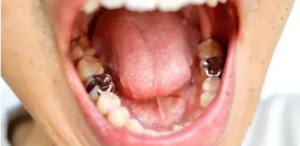A dental filling restores a tooth with decay or a cracked tooth back to its original condition. It also prevents a tooth from breaking or needing a more complicated treatment, such as a root canal.
 Tooth-coloured fillings are a modern dental material made of glass particles and synthetic resin. They are bonded into the tooth, shaped and hardened with a special light. For more information about dental fillings Adelaide, check this out.
Tooth-coloured fillings are a modern dental material made of glass particles and synthetic resin. They are bonded into the tooth, shaped and hardened with a special light. For more information about dental fillings Adelaide, check this out.
What is a filling?
A filling is a tooth-coloured material placed in a cavity to stop decay, reduce pain and prevent further issues. Many different fillings are available, including silver amalgam, composite resin and porcelain. The filling you get depends on the location and extent of damage, your dental insurance coverage and your dentist’s recommendation.
Silver amalgam fillings are a traditional option made from an alloy of silver, tin and copper. They’re durable and long-lasting but don’t have the most aesthetically pleasing appearance. Some patients are also concerned that silver amalgam fillings may release mercury vapour during chewing or drinking, which can be inhaled and absorbed into the body. However, the Australian Dental Association continues to support their use.
Tooth-coloured composite resin is a popular choice for fillings as they can be closely matched to the colour of your existing teeth and are bonded directly to your teeth. Although they’re less durable than other fillings and can stain, they protect the remaining tooth excellently.
Porcelain fillings, sometimes called inlays or onlays, are custom-crafted for your tooth in a lab and bonded to the tooth. They’re an excellent match to your tooth colour and are resistant to staining. They can be a little more expensive than composite resin options.
Indirect composite fillings are similar to porcelain inlays/onlays, but they’re made from a stronger composite resin instead of porcelain. They can be more cost-effective and a better fit for your tooth, but they’re not as strong as an onlay/inlay and are more likely to fracture.
No matter which filling type you choose, keeping up with your oral hygiene routine after having a filling is essential. It includes brushing twice daily and cleaning between your teeth each day. It would be best if you also visited your dentist regularly to ensure your filling is still in good shape. If you start experiencing sensitivity after having a filling, this is normal and should clear up in a few days. Using toothpaste for sensitive teeth or taking painkillers can help ease discomfort until the sensitivity disappears.
How is a filling done?
A dental filling is used to fix a small hole, crack or cavity in your tooth. It can also be used to restore a tooth damaged by trauma or broken off. The procedure for placing a filling is relatively painless and takes between 25 and 90 minutes to complete. Before beginning the process, your dentist will administer a local anaesthetic to numb the area around the tooth that needs to be filled.
The first step is to clean the affected area by using a small drill to remove any bacteria and decayed surface of your tooth. It can be a little uncomfortable, but preventing bacteria from entering your digestive tract or tainting the bloodstream is necessary. The next step is to wash the area with water and dry it using a towel. Your dentist will then layer the composite resin material on your tooth. Each layer is cured or hardened by a special light before the next one is applied. This multilayering process is repeated until the desired result is achieved. Once the final filling is placed, your dentist will shape it, trim off any excess material and polish your tooth to finish the procedure.
It is important to note that even with regular brushing, flossing and professional cleanings, your dental fillings can wear down or chip. It can be caused by chewing, grinding or clenching your teeth, overly aggressive tooth brushing or trauma to the mouth. If you have a filling that is wearing down or has a chip, you must visit your dentist for prompt treatment, as this can prevent further damage to your tooth. You must also visit your dentist for regular checkups to ensure the restorations are in good condition.